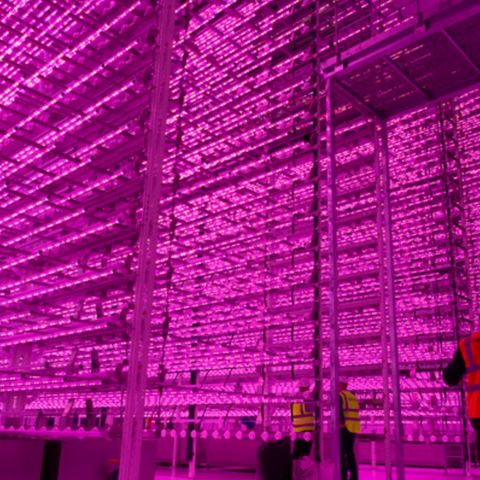Is it green? the UK's newest vertical farm

Descarga y escucha en cualquier lugar
Descarga tus episodios favoritos y disfrútalos, ¡dondequiera que estés! Regístrate o inicia sesión ahora para acceder a la escucha sin conexión.
Is it green? the UK's newest vertical farm
Esta transcripción es generada automáticamente. Ten en cuenta que no se garantiza una precisión absoluta.
Descripción
Here are some key points from this podcast interview with James Lloyd-Jones, CEO of the Jones Food Company (JFC): - The main differences between a vertical farm and a high-tech...
mostra más- The main differences between a vertical farm and a high-tech greenhouse are – no glass; multiple layers; and a more controlled environment, which allows a higher output per sqm of growing area.
- James is about to launch his new “JFC2” farm, which will add to an existing farm at Scunthorpe, and R&D facility in Bristol. The new farm structure is a 15,000 sqm factory. The farm is presently being commissioned, and will start operation on May 1.
- “It’s a beast. It’s a monster.” It will be the biggest vertical farm in Britain, built as a single unit.
- The growing area is 35m wide, comprising six planting corridors, each 80m long. It is 10m high, stacked in 15 levels.
- James expects the farm to produce just over 1,000 tonnes of leafy greens per year. He sees total UK national annual demand at very roughly 50,000 tonnes, for leafy greens, implying that his new farm alone will cater for at least 2% of total national demand.
- Energy costs are higher, but they’re also more predictable than a greenhouse. Being indoors without natural light, the lighting and HVAC are the same throughout the season, allowing the operator to predict future margins, and lock these in with long-run forward energy contracts. James says this ability to lock in energy supply contracts, and have a more stable growing environment, may make vertical farming more resilient to energy price volatility, for example during last year’s surge in gas prices.
- Regarding capital costs, by building much of their own technology, under a design, build and operate model, JFC has been able to cut capex more quickly. At their first farm, capex was £1.5k per sqm. Now they’re at £1k, and aiming for less than £900, for automated systems, a level broadly competing with a smart greenhouse.
- Operating costs are in descending order: power (HVAC and lighting); labour; and distribution. They have been able to reduce these, for example by going fully automated; packing on site; and through economies of scale, building larger units.
- Vertical farming is already competitive with imports of smaller, more perishable plants, such as salads and herbs, which JFC have been selling for several years into the UK market.
- JFC’s carbon footprint is slightly higher than Egyptian field agriculture, one benchmark competitor for herbs. James sees some fairly straightforward ways to cut their footprint, including using local renewable power, and optimising plant growing space.
- Being local to demand centres, unlike imports, it might be expected that vertical farms would benefit from a renewed focus on food security. James says JFC did see some greater interest after Brexit and Covid, while disruptions from climate change are a demand driver, to keep food shelves stocked, year-round, with local produce.
- The company’s next steps, after a week’s holiday for James, will include domestic UK and international expansion.
- And the next big thing in the market at large? The most exciting thing, he says, is “realism” – away from recent hype. And … berries!
Información
| Autor | Gerard Wynn |
| Organización | Gerard Wynn |
| Página web | - |
| Etiquetas |
Copyright 2024 - Spreaker Inc. an iHeartMedia Company
